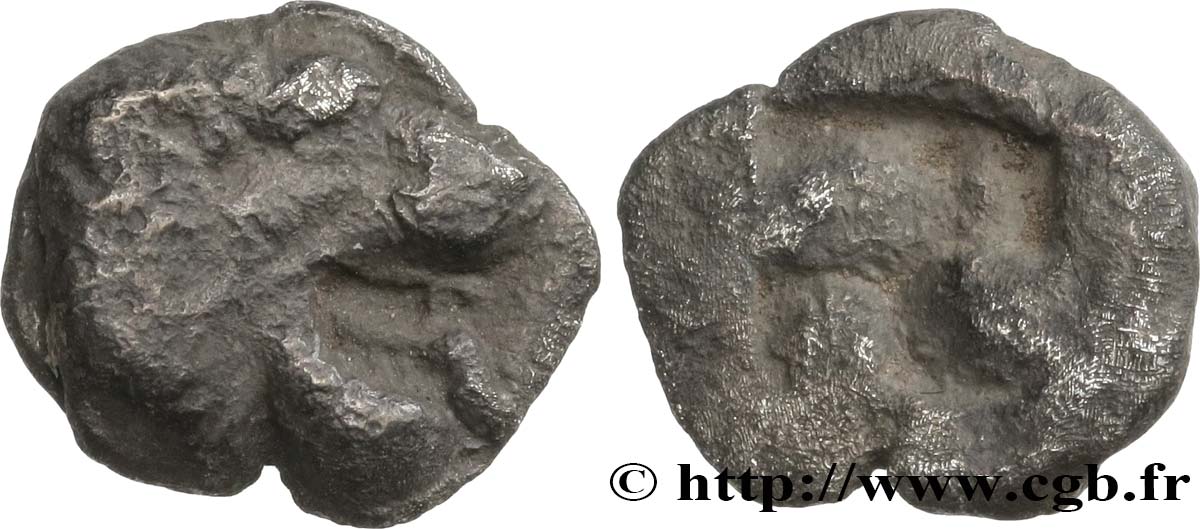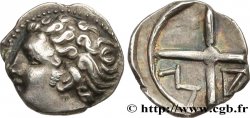bga_616781 - MASSALIA - MARSEILLES Hémiobole à la tête de lion, à droite, du type du trésor d’Auriol
220.00 €约 1658.80 CNY
数量
加入购物车

种类 Hémiobole à la tête de lion, à droite, du type du trésor d’Auriol
日期: c. 490-470 AC.
铸币厂名称/城市 Marseille (13)
材质 silver
直径 9,5 mm
重量 1,02 g.
稀少度 R2
关于品相的说明
Exemplaire sur un flan ovale et irrégulier, échancré au droit à 6 heures, mais complet à l’usure régulière. Patine noire
出版目录中的项代码 :
正面
正面的文字 ANÉPIGRAPHE.
正面的说明书 Tête de lion à droite, la gueule ouverte et la langue pendante.
背面
背面的文字 ANÉPIGRAPHE.
背面的说明书 Carré creux irrégulier.
评论
Cet exemplaire semble issu du même coin de droit que la monnaie T4 de Furtwängler (ANS. ex HS 7286).
Ce groupe T semble regrouper toutes les premières monnaies au lion. Les groupes Ta, U, Ua, Ub, Uc et Ud semblent être de moins bon style !
Pour ce groupe T, les monnaies sont assez rare et les poids varient entre 0,68 et 1,35, du simple au double (?).
Les auteurs du Dicomon recensent les 25 exemplaires du trésor d’Auriol, les 4 de La Courtine et celui de Septèmes-les-Vallons.
Ce groupe T semble regrouper toutes les premières monnaies au lion. Les groupes Ta, U, Ua, Ub, Uc et Ud semblent être de moins bon style !
Pour ce groupe T, les monnaies sont assez rare et les poids varient entre 0,68 et 1,35, du simple au double (?).
Les auteurs du Dicomon recensent les 25 exemplaires du trésor d’Auriol, les 4 de La Courtine et celui de Septèmes-les-Vallons.








 对产品描述纠错
对产品描述纠错 打印
打印 分享我的选择
分享我的选择 提问
提问 Consign / sell
Consign / sell
 产品介绍
产品介绍










